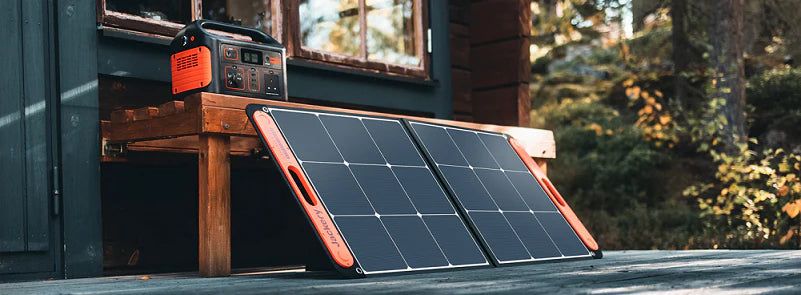If you don't know your home's energy usage, the easiest way to understand your approximate energy consumption is to look at where you stand about the national average. The average UK household consumes 2,700 kWh of electricity and 11,500 kWh of gas annually. If you want a more precise energy consumption estimate, you can check your energy bill, read your meter or ask your energy supplier.
Alternatively, you can calculate your energy consumption yourself by reading your meter. Use the current electricity or gas meter reading and the last reading to calculate your energy consumption for the period you want to know.
In addition to reducing your power consumption, including changing your usage habits and using energy-efficient appliances, we recommend the Jackery Portable Power Station for powering your household appliances with solar energy.
|
Key Takeaways: |
|
- You can check your energy bill, read the meter, or ask your energy supplier for information on your energy consumption. - Based on the current and last meter readings, you can calculate the energy consumption for the period you want to know. - Central heating systems, hot water systems, kitchen appliances, and equipment are the most energy-consuming parts of the home. - Poorly insulated homes, frequent use of high-power devices, too cold or hot weather, and other factors can lead to excessive energy consumption. - For UK households, optimising boiler efficiency, strengthening home insulation or switching to renewable energy can reduce energy consumption. - We recommend the Jackery Explorer 2000 Plus or 1000 Plus portable power station for charging household appliances. It offers an expandable capacity and is portable. |
How Do I Understand My Energy Usage?
In today's energy conservation and cost management era, it is essential to understand your personal or family's energy consumption. Knowing your energy consumption data for UK residents can save money and contribute to environmental protection. In the UK, you can understand your energy consumption in the following ways:
Check the Energy Bill
Energy bills are the most direct way to understand your energy consumption. They are divided into electricity and gas bills. If the same supplier provides them, they are combined. Otherwise, they are billed separately. Energy bills are generated monthly or quarterly and will show the energy usage (such as kWh), unit price, and total price for the current period.
Your bill may also mark the electricity consumption as "Estimated" or "Actual," with actual readings being preferred.
Reading the meter directly can obtain instant energy consumption, especially for scenarios where precise control of energy consumption is required. Here is how to read a traditional dial meter for electricity and a dial meter for gas:
Traditional Dial Meter: Read the four dials on the bottom row from left to right, and ignore the red numbers or dials marked with 1/10. When the pointer is between two numbers, record the smaller number. For example, if the pointer is between 1 and 2, record 1. The correct dial reading in the figure below is 64566.

(Data Source: Britishgas)
Dial gas Meter
Like the electricity meter, only read the four dials from left to right on the bottom row, ignore the other dials, and write down the number closest to each pointer. When the pointer is between two numbers, write down the smaller number. The correct meter reading in the figure below is 6456.
Consult the Energy Supplier
Call the supplier's customer service number or use the online chat tool. After providing your account information, you can ask customer service to provide a detailed energy analysis report, including historical consumption, peak hours, etc. For example, if you are a credit customer of British Gas, please call 0800 0728 625 from 8 a.m. to 8 p.m. Monday to Friday and 9 a.m. to 2 p.m. on Saturday. Some electricity suppliers, such as British Gas, EDF, and Octopus, can provide customised electricity consumption analysis.
Average Energy Consumption of UK Households
The average energy consumption of British households reflects the cost of daily life and becomes a key indicator for measuring social and economic development and sustainable transformation. British households' average energy consumption data is closely related to the energy consumption level. There are three energy consumption levels in the UK: low user groups, medium user groups, and high user groups.
Low User Groups
Low user groups have the lowest average energy consumption. They usually have one or two people and may live in a one- or two-bedroom apartment. They typically stay home at night and on weekends, wash clothes once a week, use heating occasionally, and do not use dishwashers or tumble dryers.
Medium User Groups
Medium user groups are usually families of three to four people living in three-bedroom houses. Some family members stay home during the day, at night, and on weekends. They wash clothes on average three times a week and often use heating.
High User Groups
High user groups are usually five or more people living in a four-bedroom or larger house. Some family members are always at home during the day, at night, and on weekends and often use tumble dryers, dishwashers, etc. The following table shows the data used by Ofgem to define high, medium, and low annual energy use.
|
Typical Energy Usage |
Average Annual Electricity Consumption |
Average Annual Gas Consumption |
|
Low (Flat or 1-Bedroom House/1-2 People) |
1,800 kWh |
7,500 kWh |
|
Medium (3-Bedroom House/2-3 People) |
2,700 kWh |
11,500 kWh |
|
High (5-Bedroom House/4-5 People) |
4,100 kWh |
17,000 kWh |
(Data Source: Ofgem)
The average energy consumption of a UK household usually includes two data: electricity consumption and gas consumption. Ofgem usually sets the energy consumption data of Medium user groups as the average energy consumption of UK households. Therefore, based on the above data, the average energy consumption of a UK household is 2,700 kWh of electricity and 11,500 kWh of gas per year.
How to Work Out Energy Consumption?
Understanding and managing your household energy (electricity and gas) consumption is key to controlling the cost of living and improving energy efficiency in the UK. Here are the basic steps for calculating electricity and gas consumption for UK households:
How to Calculate Electricity Consumption?
Calculating electricity consumption in the UK involves multiple steps, including reading the meter and calculating electricity consumption based on a formula. Here are the detailed steps for calculating electricity consumption:
Step 1: Find the Meter Reading
Electricity meters in the UK usually record electricity consumption in kilowatt-hours (kWh). Find the meter on the meter, which generally has a digital display or a mechanical dial. You only need to read the whole number part and ignore the leading zero or the number after the decimal point.
Step 2: Electricity Usage Calculation
If you want to calculate monthly electricity consumption, you can refer to the following formula:
Electricity usage (kWh) = Current reading - Last reading
Example: The meter of an average British household reads 2200 at the end of June and 2000 at the end of May. How much electricity did this household use in June?
Electricity consumption in June = 2200 kWh - 2000 kWh = 200 kWh
So, the household's electricity consumption in June was 200 kWh.
How to Calculate Gas Consumption?
In the UK, calculating gas energy consumption usually involves the following steps to ensure accurate bill estimates and monitor energy use:
Step 1: Find the Gas Meter Reading
The method of reading a gas meter is similar to the steps of reading an electricity meter. Standard gas meters usually display numbers in cubic meters (m³) or cubic feet (ft³). Smart gas meters can read data directly through the electronic screen (usually in m³ or kWh).
Step 2: Convert Gas Volume to Energy Units (kWh)
Gas companies use calorific value and volume correction factors to calculate energy consumption. The gas supplier provides the calorific value, usually between 38 and 42 MJ/m³. Here, the calorific value is taken as 39.2. The volume correction factor is usually 1.02264, but it will be adjusted according to temperature and pressure. To convert gas usage to kilowatt-hours, use the following formula:
Gas usage (kWh) = Gas usage (m³) × calorific value × volume correction factor ÷ 3.6
Example: The gas meter of an average UK household reads 7850 at the end of May and 7750 at the end of April. How much gas did this household use in May?
Gas usage in May = (7850-7750) × 39.2 × 1.02264 ÷ 3.6 ≈ 1113.54 kWh
Therefore, the gas usage of this household in May is 1113.54 kWh.
The Most Energy-Consuming Household Devices
The UK's most energy-intensive household appliances are usually high-powered and used for long periods. Here are some of the main energy-intensive household appliances and their characteristics:

Central Heating System
Most homes in the UK use gas boilers to provide heat for the central heating system. This is the largest energy consumer in the house, especially in winter, and can account for more than 60% of total energy expenditure.
If the home uses electric heating (such as thermal storage heaters or electric heat pumps), the power consumption will increase significantly, accounting for more than 30% of the UK household's winter electricity bill.
Hot Water System
Gas boilers are also used to heat domestic water (bathing, washing dishes, etc.), which is the second largest source of gas consumption, accounting for about 15-25%.
For households using electric water heaters, heating water is also the second-largest energy consumer in the home. For example, an immersion heater must be heated continuously, with a power of about 3 kW, and is a high-power device throughout the year.
Kitchen Appliances and Equipment
Although people use kitchen appliances and equipment for short periods, they use them frequently. Although the consumption of gas stoves is relatively low (about 5%), it may be slightly higher in households that cook often. In addition, a few households also use gas fireplaces, but they are inefficient and account for a small proportion.
Most kitchen appliances have higher power than gas stoves, and energy consumption increases dramatically when multiple heads are used simultaneously. For example, an electric oven's power is usually 2–2.5 kW, and it may work continuously for 1–2 hours when baking or roasting, consuming a lot of electricity.
What Factors Affect Energy Consumption?
In the UK, many factors affect household energy consumption, including climate, building characteristics, living habits, technical equipment and policies. The following will analyse several significant factors that affect household energy consumption:

Climate and Season
In the UK, low temperatures in winter force households to significantly increase their heating needs, and gas consumption surges. In summer, electricity demand may rise due to air conditioners or fans. Extreme weather, such as cold snaps or heat waves, can significantly increase energy consumption, while mild years may reduce demand.
Building Characteristics
In the UK, building energy-saving design directly determines energy consumption. Buildings with low EPC (Energy Performance Certificate) ratings (G-grade) consume more energy due to poor insulation and old boilers. For example, many old buildings in the UK have poor insulation performance and insufficient sealing of doors and windows, resulting in high gas consumption during the heating season.
Population Size and Structure
Increasing the number of people in the home will lead to increased energy consumption because lighting, heating, and cooling require more energy. For example, a family of four usually consumes much more energy than two. In addition, the elderly may also rely more on energy for heating or cooling.
Equipment and Appliance Efficiency
Due to daily wear and tear, old appliances consume more electricity as they become less efficient. In addition, large-screen TVs, smart devices, game consoles, and other high-power devices can account for 5-10% of household electricity.
User Energy Consumption Habits
Individual behaviour can have a cumulative impact on energy consumption. For example, frequent use of high-power appliances such as dryers and dishwashers can significantly increase electricity consumption. Users relying too much on air conditioning in the summer instead of using natural ventilation in buildings will consume more electricity. Excessive water heating or prolonged heating can also increase gas consumption.
Tips to Reduce Energy Consumption
Energy bills are a significant part of household expenses in the UK, but ordinary households can effectively reduce their electricity and gas consumption through reasonable energy-saving measures. Ordinary households can effectively reduce their electricity and gas consumption by:

Optimise Boiler Efficiency
Replace the boiler with a high-efficiency condensing boiler with an energy efficiency rating of A or above, as old boilers may waste more than 30% of energy. Perform boiler maintenance once a year, clean the filter and check the insulation of vents, hot water tanks and pipes. Alternatively, set the heating water temperature below 60°C.
Insulate the House
For most British households, installing external wall insulation, double-glazed windows, and roof insulation can significantly reduce heating needs and energy consumption. For example, installing loft insulation can reduce heat loss by 25%. You can add cavity or solid wall insulation and use draught strips to seal door and window gaps.
Optimise Electrical Equipment
Please immediately eliminate or replace old high-power appliances such as electric kettles and microwaves. Prioritise replacing your washing machine, dryer, etc., with new ENERGY STAR-rated appliances. Use smart sockets or smart meters to monitor electricity usage, identify high-energy-consuming appliances, and minimise their use.
Daily Habit Adjustments
The easiest way to reduce energy consumption is to be mindful of energy conservation daily. Here are some energy-saving tips for daily life:
Take shorter showers.
Use the 30°C cold water setting on your washing machine and avoid running it half-loaded.
Use a microwave instead of an oven.
Let clothes dry naturally instead of in the dryer.
Switch to Renewable Energy
Replace traditional gas boilers with heat pump systems, which extract heat from the air for heating, which is more efficient. Alternatively, install a solar system to generate electricity from sunlight to partially offset your home's electricity needs. For households with time-of-use electricity rates, consider using a home battery or portable power station (such as the Jackery Explorer 2000 Plus / 1000 Plus) to store electricity during low-price periods for use during peak hours.

Jackery Portable Power Stations to Lower Electric Bills
The power station captures free solar energy when connected to Jackery Portable Power Station and Jackery Solar Panels. You can then use this stored energy to power your devices and appliances instead of drawing electricity from the grid, thus lowering your consumption and bill.
Also, you can charge the Jackery Portable Power Station during off-peak hours, when electricity rates are typically lower, and then use that stored power during peak hours, when rates are higher. This strategy helps you avoid paying higher electricity costs.
While not directly saving on your regular bill, having a Jackery as a backup prevents you from losing perishable food, interrupting work, or facing other inconveniences during power outages. This indirectly saves you money by avoiding potential losses.
Jackery Explorer 1000 Plus
With its enhanced features, the Jackery Explorer 1000 Plus can be valuable in reducing your electric bills. It can handle a significant solar input, allowing faster and more efficient recharging from solar panels compared to smaller capacity models.

While the maximum input wattage depends on the panels used, it's designed to work efficiently with the Jackery SolarSaga series. You can connect multiple panels to maximise charging speed. Some configurations can achieve a full solar recharge in as little as 2 hours using four SolarSaga 200W solar panels.
Like other Jackery power stations, the 1000 Plus incorporates MPPT (Maximum Power Point Tracking) technology. This technology optimises the energy harvested from solar panels, ensuring you get the most out of the available sunlight and charge your power station more quickly. Thus, it maximises the use of free solar energy and reduces reliance on grid charging.
With a base capacity of 1264Wh, the Explorer 1000 Plus can store significant energy. Using stored solar power, you can power more appliances for longer durations, directly offsetting your electricity consumption from the grid.
A standout feature of the 1000 Plus is its expandability. You can connect up to three additional battery packs to reach a total capacity of 5kWh. This significantly increases the amount of stored energy available, enabling you to power larger appliances for extended periods or provide substantial backup power, reducing your dependence on the grid.
|
Jackery Explorer 1000 Plus Running Time |
|
|
Electric Kettle (600W) |
1.7-6.7H |
|
Coffee Maker (550W) |
1.8-7.3H |
|
Refrigerator (300W) |
3.2-13.3H |
|
Projector (100W) |
8.8-40H |
|
TV (60W) |
13.2-66.7H |
(*The working hours are only for reference; the actual working hours depend on your usage.)
Jackery Explorer 2000 Plus
The Jackery Explorer 2000 Plus, with its substantial capacity and advanced features, offers significant potential for saving on electric bills, especially when integrated with solar power.
The Explorer 2000 Plus can handle a significant solar input (up to 1400W with dual DC ports), allowing for rapid recharging using solar panels. For instance, it can be fully charged in about 2 hours using six 200W solar panels. This enables you to harness more free solar energy in a shorter time frame.

With a 2042.8Wh capacity, the Explorer 2000 Plus can store much energy. This allows you to run various appliances on solar power for extended periods, directly reducing your grid electricity consumption. For example, it can power a 300W refrigerator for approximately 5.3 hours.
A key advantage is its ability to expand its capacity up to 12kWh by connecting up to five additional battery packs. This massive storage potential allows you to power even more of your household appliances for longer durations, covering a significant portion of your daily energy needs with stored solar power.
The Explorer 2000 Plus features multiple AC outlets, delivering a continuous output of 3000W (with a 6000W surge peak). This high power output allows you to run energy-intensive appliances like electric ovens, power tools, and even some air conditioning units on stored solar energy, leading to substantial savings on your electricity bill.
Equipped with USB-A and high-power 100W USB-C ports, it can efficiently charge your electronic devices, reducing your reliance on grid power for these needs.
|
Jackery Explorer 2000 Plus Running Time |
|
|
Electric Kettle (600W) |
2.7-16H |
|
Coffee Maker (550W) |
2.9-17.5H |
|
Refrigerator (300W) |
5.3-32H |
|
Projector (100W) |
14.2-96H |
|
TV (60W) |
21.5-160H |
(*The working hours are only for reference; the actual working hours depend on your usage.)
FAQs
The following are the frequently asked questions about working out the energy consumption in the UK.
1. How do I know how much energy I use?
Here are some ways to get your energy usage:
Meter readings (electricity and gas)
Check your latest energy bill
Ask your energy supplier
2. How do I estimate your energy usage?
Before estimating your energy usage, here are some things to know:
The type of property you live in
When your home was built
The number of bedrooms in your home
The number of people in your home
When and how often do you use energy
Based on the above, you can estimate your energy usage using Ofgem's low, medium, and high energy. For example, suppose two people live in a one—or two-bedroom flat, are home at night and at weekends, do laundry once a week, and use the heating occasionally. In that case, your annual electricity consumption may be around 1800kWh, and your yearly gas consumption may be around 7500kWh.
3. Which is more expensive, gas or electricity?
According to Ofgem's energy price cap, gas costs 6.34p per kWh and electricity costs 24.86p per kWh from April 1 to June 30, 2025. As a result, electricity bills in the UK are much higher than gas bills and can even be almost four times higher.
4. What are the cheapest ways to reduce energy consumption?
The simplest way to reduce energy consumption is to run devices and appliances less frequently at home. For example, turn off and unplug your computer, games console, or toaster when not using them. Alternatively, you can also reduce the frequency of heating and cooling your home. For example, you can reduce the use of hot water by taking shorter showers.
Final Thoughts
Understanding and managing your home energy consumption is key to controlling the cost of living and becoming more energy efficient. By understanding your energy consumption, you can determine if you are using too much gas and electricity and spending more than you need to.
In addition to checking your energy bill and asking your energy supplier, this article teaches you how to calculate your energy consumption by reading your meter. Optimising boiler efficiency, improving home insulation, or switching to renewable energy sources can reduce energy consumption for most UK homes.

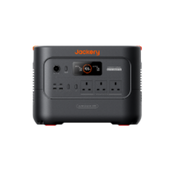

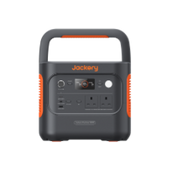







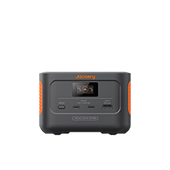
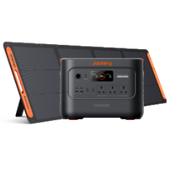


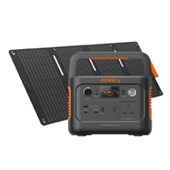


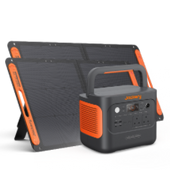

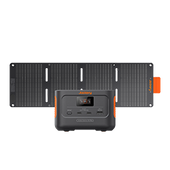


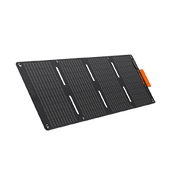







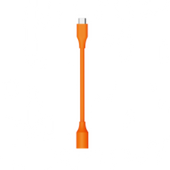



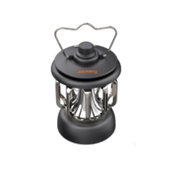




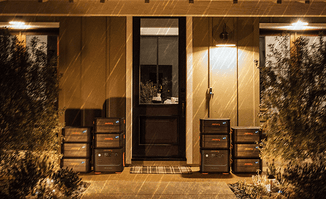


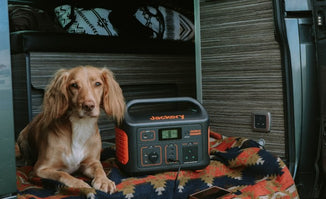


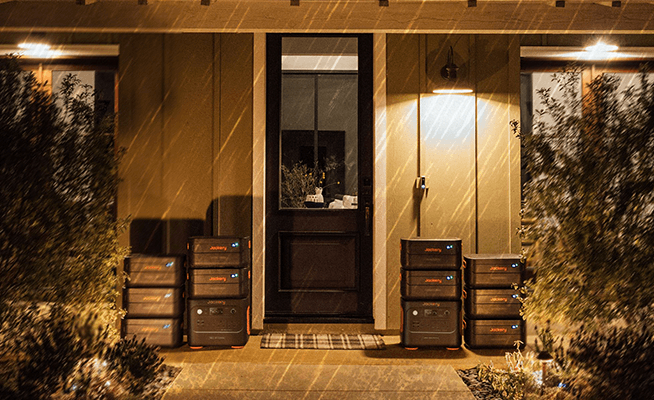

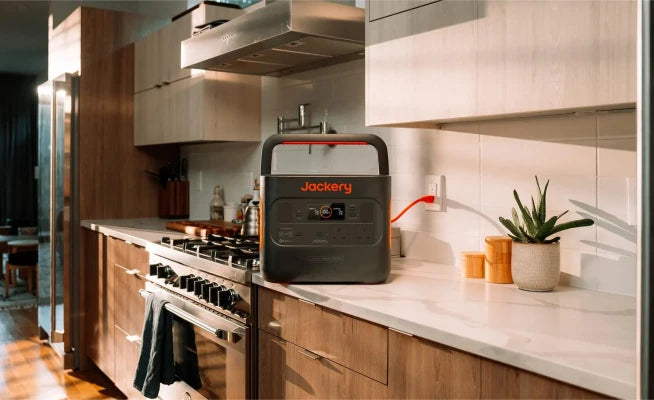
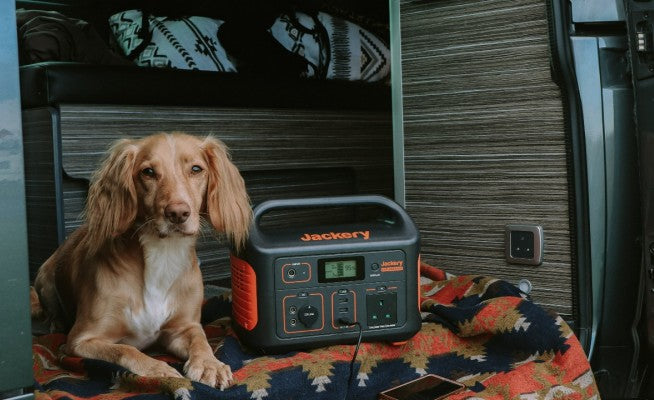






![How to Work Out Energy Consumption [2025 UK Guide]](http://uk.jackery.com/cdn/shop/articles/how_to_work_out_energy_consumption_guide_74148627-7364-4b65-befc-67cbe5a4ac44.png?v=1748245248)



